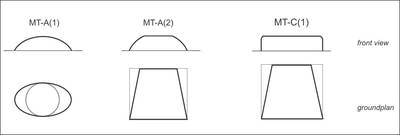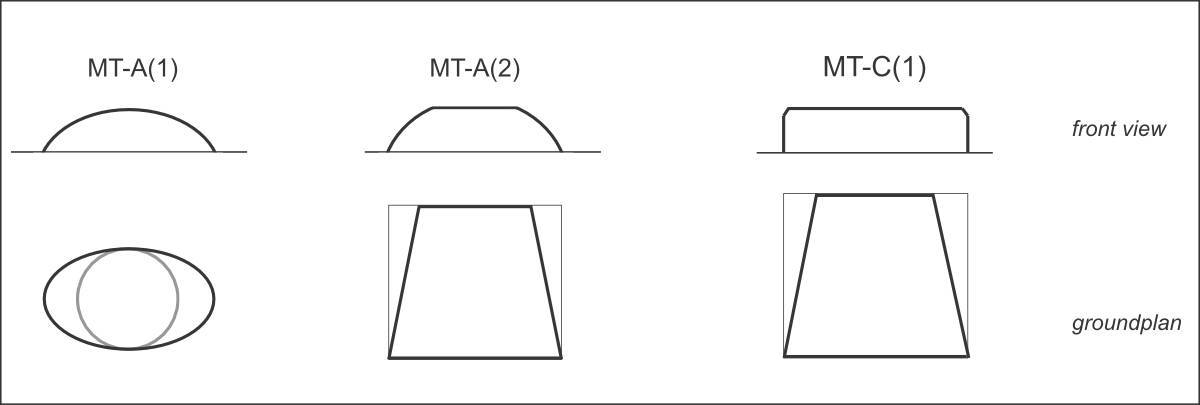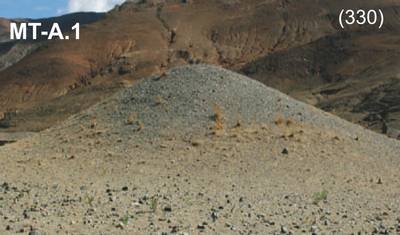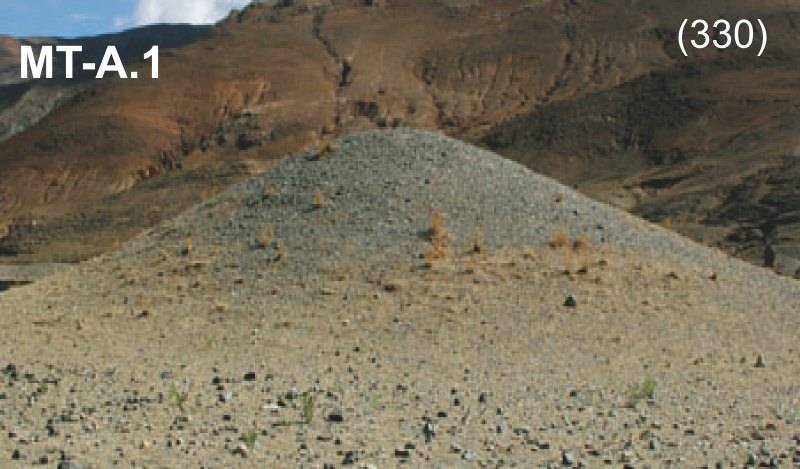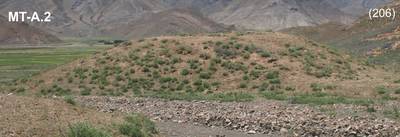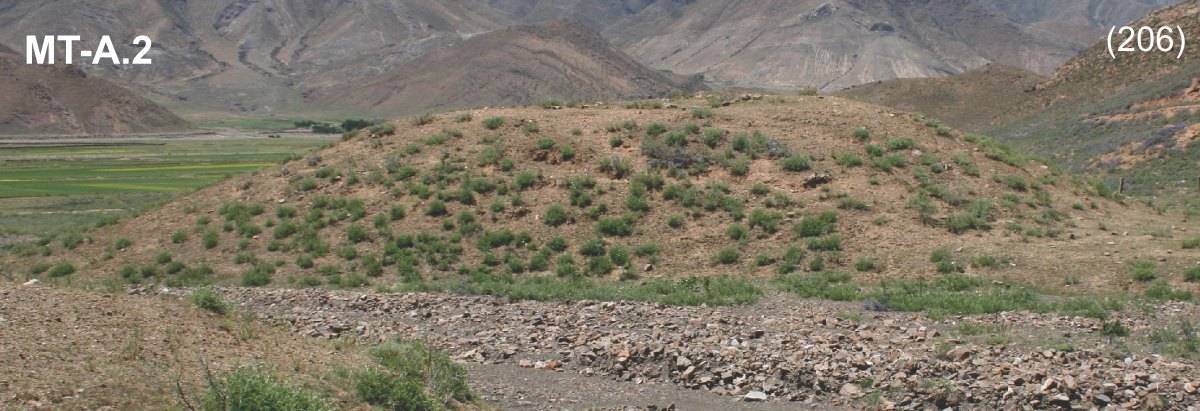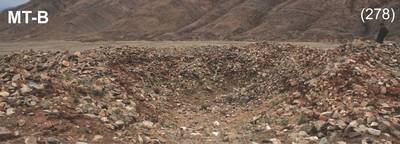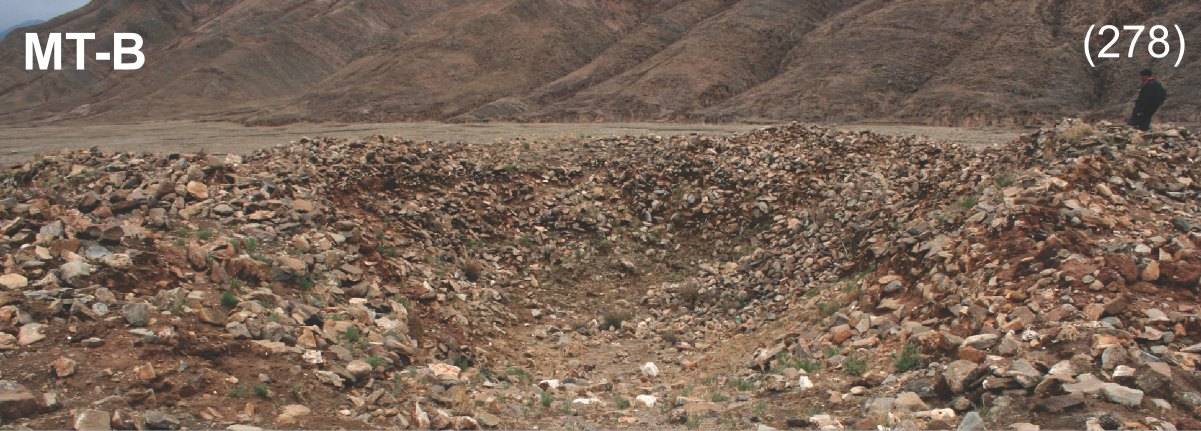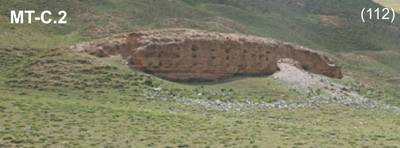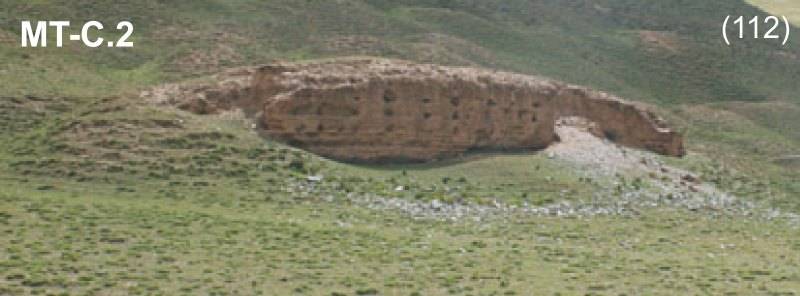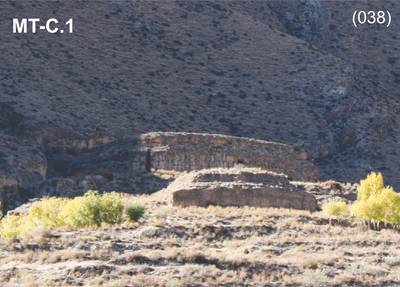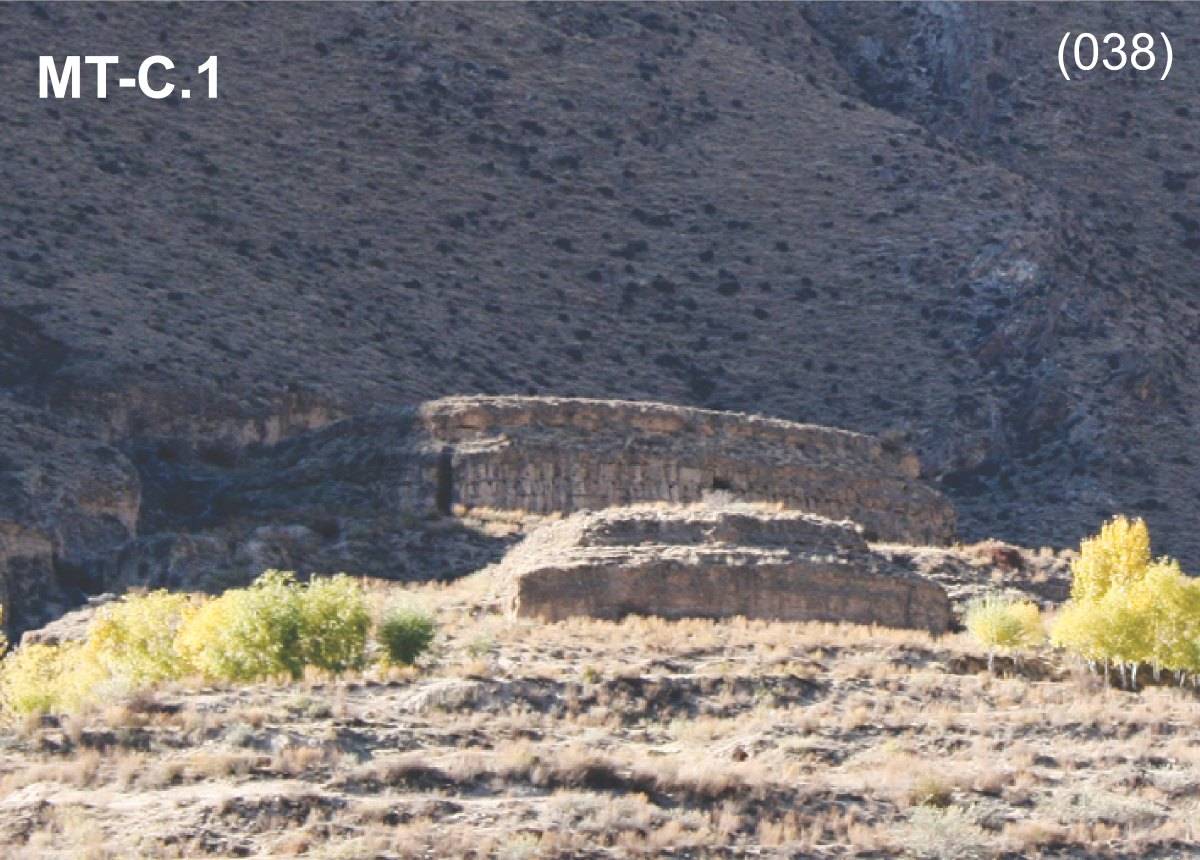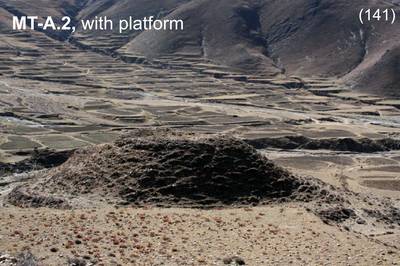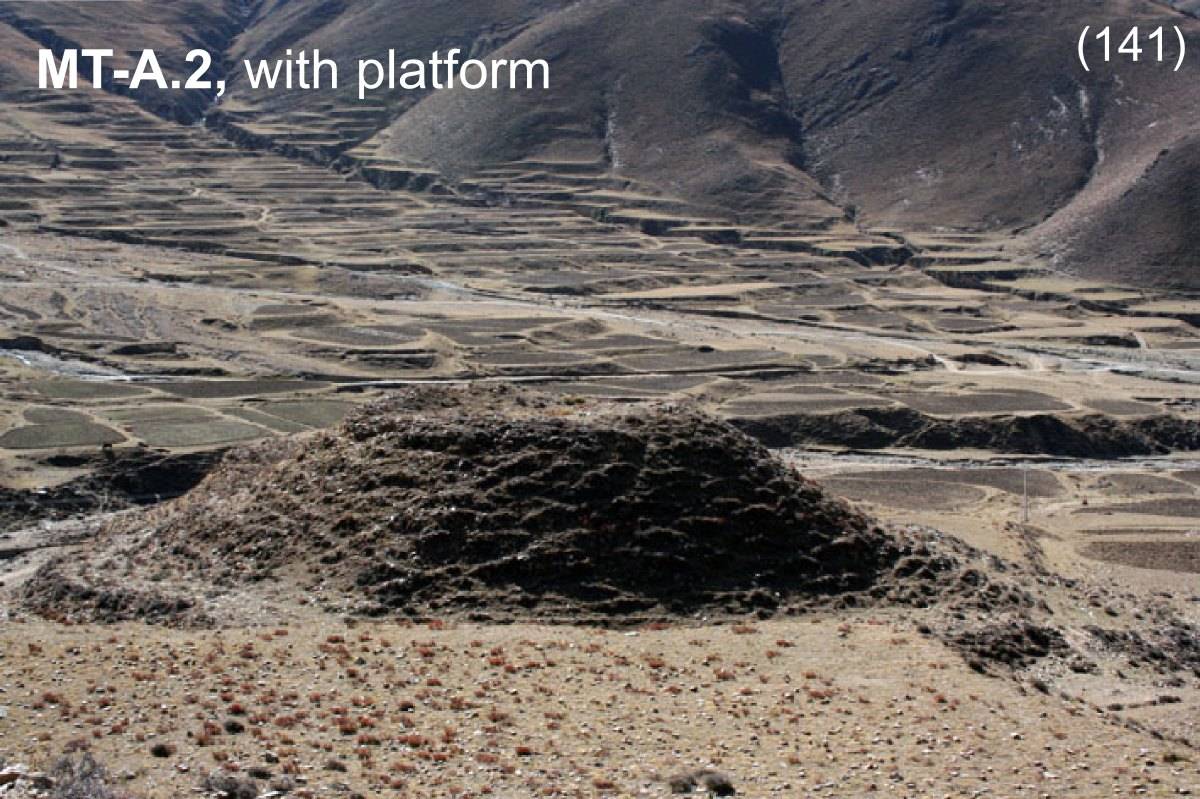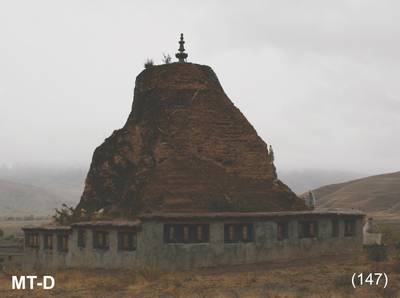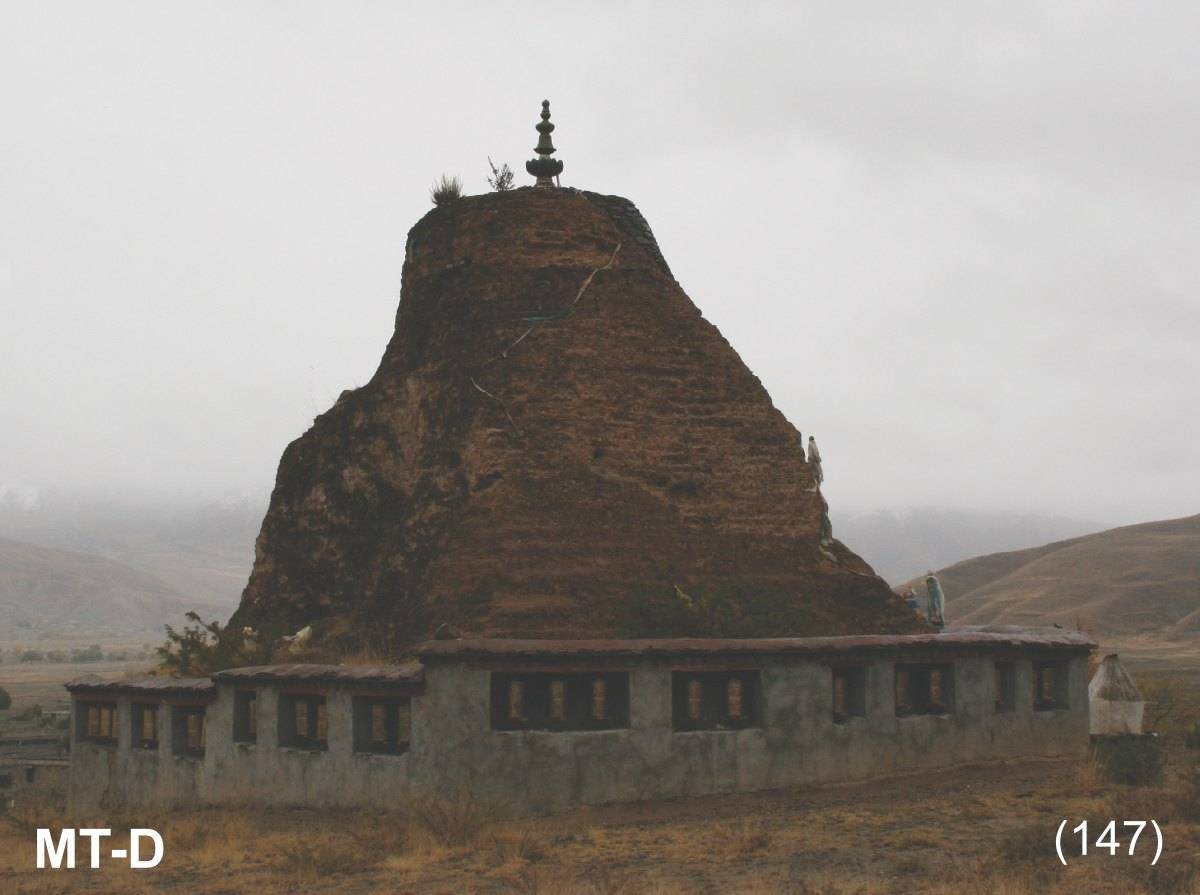Types of burial mounds
Principal mound types (MT):
MT-A.1: The round tomb, with a round or oval ground-plan. This is usually smaller (2-10m). (The burial chamber is covered with layers of earth, or a series of concentric earth walls abutting each other and tapered towards the top (cf. Chan 1994: 362 with respect to field #0011). Often the mound above the chamber is of a mixture of stone and earth, and in some cases apparently mainly stones pebbles were used, = MT-B).
MT-A.2: In principle a similar shape as MT-A.1 but with a flattened top, and usually on trapezoidal plan. Larger mounds (up to 50m) of this type evidently have an inner construction similar to MT-C.1.
MT-C.1: The coffer-shaped, walled tomb; the tamped earth above the chamber(s) is enclosed by one or more walls made of a mixture of stone (or stone slabs) and earth, often reinforced by timber. The space between the walls is filled with stones (or stone and earth).
MT-C.2: Similar to MT-C(1), only that the three side of the construction are covered in earth to accent the hill or mountain-like shape. Tombs of the MT-C types are quadrilateral, mostly trapezoidal. They are to be found in the three categories of small (5-20m), medium (20-35m) and large (up to 135m). All types of mounds represent mountain-like constructions, where in the case of trapezoid structures, quasi in conformity to the mountain behind, with the longer front side facing down to the valley floor. Usually the height of a larger tomb is not more than 10m. Some of the mounds (namely of the MT-A.2 or MT-C(1) type) were built on an artificial platform, which gives the impression of a stepped construction.
MT-D: The stupa-shaped tomb. No details of the inner construction of this type of tomb are known, which is mentioned in the texts in connection with Buddhist representatives of the Tibetan Royal House (cf. most recently Hazod, forthcoming b). Examples are to be found in the fields of #0047 and #0092, #0397, #0398; see also #0136.
